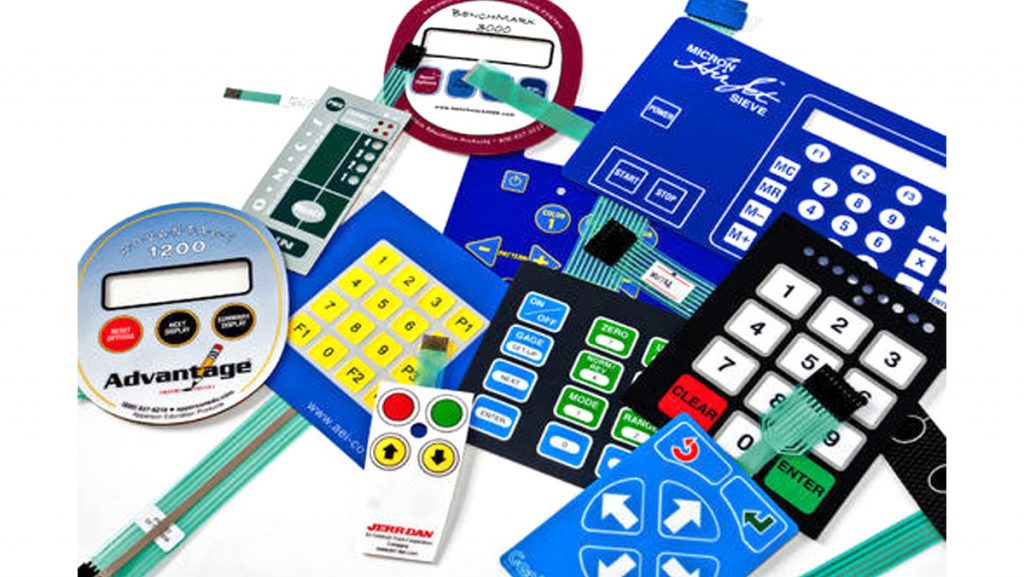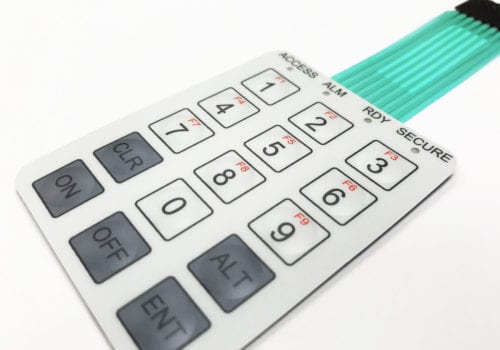Custom Membrane Switches for Specialized Applications: A Deep Dive
Custom Membrane Switches for Specialized Applications: A Deep Dive
Blog Article
Understanding the Value of Membrane Switches in Individual User Interfaces
Membrane buttons are integral parts in the layout of effective interface, helping with not only performance but likewise improving visual allure and user interaction. Their special features, such as resistance to ecological aspects and personalized designs, make them suitable for a diverse array of applications across several markets. As we check out the future patterns and numerous benefits connected with Membrane innovation, it becomes clear that these buttons are greater than just parts; they represent a merging of technology and practicality. The ramifications of this modern technology on customer experience deserve analyzing better.
What Are Membrane Buttons?

The spacer layer, which contains adhesive buildings, allows for the separation of the circuit layer from the overlay, ensuring that the button continues to be in a non-activated state until pushed. When stress is used to the overlay, it presses the spacer layer, bridging the space and finishing the circuit in the underlying layer. This style not just decreases the physical area required for conventional mechanical buttons however likewise enhances the resilience of the tool, as Membrane buttons are typically immune to dirt, dampness, and other environmental factors.
Frequently located in applications ranging from consumer electronics to clinical devices, Membrane buttons are indispensable to contemporary technology, giving a efficient and straightforward interface that straightens with contemporary style needs.
Benefits of Membrane Buttons
While many button innovations exist, Membrane Switches deal unique advantages that make them specifically desirable in different applications. Among the key advantages of Membrane buttons is their portable design, which permits for space-saving executions in devices where property is restricted. Their slim account not only improves aesthetic allure yet likewise facilitates lightweight construction.
An additional considerable advantage is their resistance to ecological factors. Membrane buttons are generally sealed versus dampness, dust, and pollutants, making them suitable for use in demanding environments, such as medical devices and commercial tools. This durability extends the lifespan of the switch, reducing upkeep expenses and boosting dependability.
In addition, Membrane switches can be customized to fulfill certain layout requirements, integrating one-of-a-kind graphics and shades that enhance customer communication. Their responsive responses choices can additionally be tailored to provide a rewarding user experience. Additionally, Membrane buttons are cost-effective, specifically in high-volume applications, as they can be created efficiently.
Applications in Numerous Industries

In the customer electronic devices sector, Membrane buttons are prevalent in gadgets such as microwaves, washing machines, and remote controls. Their tactile responses and visual choices boost individual experience while offering a sleek, modern look. Furthermore, vehicle visite site producers make use of Membrane switches in control panel controls and infotainment systems, where space is limited, and customer involvement is vital.
Moreover, the commercial sector leverages Membrane switches in control panels for equipment and equipment, permitting intuitive procedure in typically harsh atmospheres. Their resistance to chemicals and moisture guarantees long life and reliability in these applications. Generally, the adaptability of Membrane Switches contributes significantly to their prevalent usage, making them indispensable in different technological domain names.
Layout Considerations for Membrane Switches

When making Membrane buttons, a number of crucial factors to consider have to be considered to make certain optimum performance and customer experience. Firstly, the selection of products is critical; selecting durable, high-grade substratums can enhance the switch's durability and resistance to ecological aspects such as wetness and temperature variations.
Secondly, the design of the visuals overlay need to prioritize quality and ease of usage. Icons and text must be understandable, and the layout needs to assist in intuitive interaction (membrane switches). In addition, tactile comments is essential; integrating a responsive dome or other devices can boost the individual experience by providing physical confirmation of activation
An additional important element is the button's electrical efficiency. Designers should make certain that the conductive traces are appropriately designed to lessen resistance and stay clear of signal disturbance. This entails analyzing the required actuation force and guaranteeing compatibility with the electronic parts they Go Here will interface with.

Future Patterns in Membrane Modern Technology
As technology continues to breakthrough, Membrane buttons are positioned to progress significantly, driven by advancements in products and producing strategies. One emerging trend is the consolidation of innovative materials, such as adaptable substratums and conductive inks, which enhance longevity and lower the total weight of Membrane buttons. These products not just enhance the tactile feedback yet also permit the style of switches that can endure harsher ecological problems.
Moreover, the integration of touch-sensitive modern technologies is changing standard Membrane Switches right into more interactive interface. Capacitive touch sensors installed within Membrane switch panels can offer an extra responsive and instinctive individual experience, lining up with the expanding demand for sleek, modern styles in customer electronics.
In addition, developments in printing strategies, such as digital and 3D printing, allow fast prototyping and modification of Membrane switches. This adaptability enables suppliers to respond faster to market needs and customer choices.
Lastly, sustainability is becoming a significant emphasis, with suppliers discovering environment-friendly materials and procedures. As these patterns unfold, the future of Membrane technology assures boosted capability, aesthetic appeal, and ecological obligation, strengthening their role in advanced interface across different markets.
Final Thought
To conclude, Membrane Switches stand for a crucial element in the design of interface, integrating functionality with aesthetic adaptability. Their advantages, consisting of durability and resistance to ecological elements, make them appropriate for diverse applications throughout different sectors. Thoughtful design considerations boost individual communication and experience. As improvements in innovation continue, the evolution of Membrane switches is expected to more refine interface, driving technology and improving functionality in a progressively complex technical landscape.
Membrane buttons are essential parts in the layout of reliable user interfaces, facilitating not only performance but also enhancing visual allure and individual communication.Membrane Switches offer as a vital component in different individual interfaces, promoting a smooth interaction in between users and electronic gadgets.While countless button technologies exist, Membrane Switches offer distinct advantages that make them particularly check preferable in various applications.Moreover, Membrane switches can be customized to satisfy particular design needs, incorporating distinct graphics and shades that improve individual interaction.In final thought, Membrane Switches represent a crucial element in the layout of individual interfaces, integrating functionality with aesthetic adaptability.
Report this page